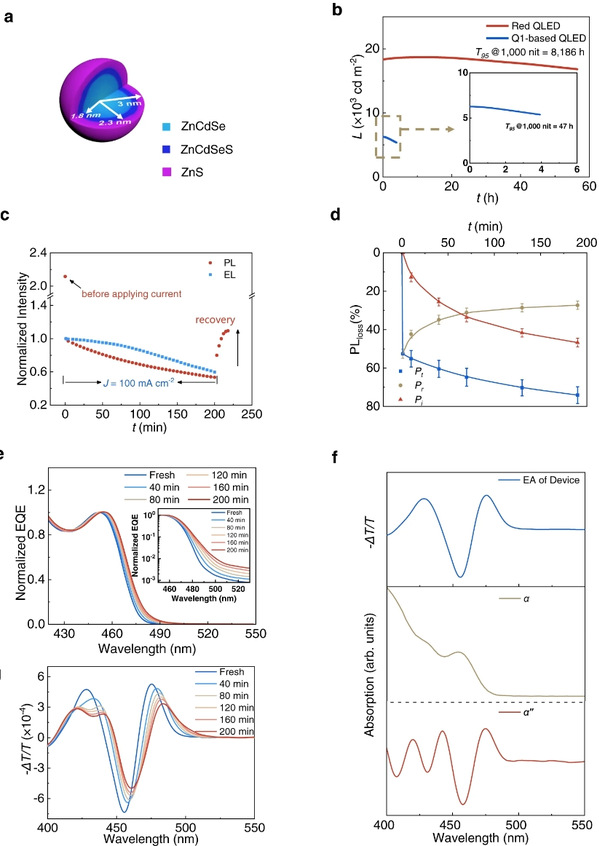Blue light-emitting diodes based on colloidal quantum dots with reduced surface-bulk coupling
Chen Xingtong1,2 ; Lin Xiongfeng3, Zhou Likuan3, Sun Xiaojuan1,2, Li Rui1,2, Chen Mengyu1,2, Yang Yixing3, Hou Wenjun3, Wu Longjia3*(吴龙佳) , Cao Weiran3, Zhang Xin3, Yan Xiaolin3, Chen Song1,2*(陈崧)
1Suzhou Key Laboratory of Novel Semiconductor-optoelectronics Materials and Devices, College of Chemistry, Chemical Engineering and Materials Science, Soochow University, Suzhou 215123 Jiangsu, China
2Jiangsu Key Laboratory of Advanced Negative Carbon Technologies, Soochow University, Suzhou 215123,Jiangsu, China
3TCL Corporate Research, Shenzhen 518067 Guangdong, China
Nature Communications, 2023, 14, 284
Abstract:To industrialize printed full-color displays based on quantum-dot light-emitting diodes, one must explore the degradation mechanism and improve the operational stability of blue electroluminescence. Here, we report that although state-of-the-art blue quantum dots, with monotonically-graded core/shell/shell structures, feature near-unity photoluminescence quantum efficiency and efficient charge injection, the significant surface-bulk coupling at the quantum-dot level, revealed by the abnormal dipolar excited state, magnifies the impact of surface localized charges and limits operational lifetimes. Inspired by this, we propose blue quantum dots with a large core and an intermediate shell featuring nonmonotonically-graded energy levels. This strategy significantly reduces surface-bulk coupling and tunes emission wavelength without compromising charge injection. Using these quantum dots, we fabricate bottom-emitting devices with emission colors varying from near-Rec.2020-standard blue to sky blue. At an initial luminance of 1000 cd m-2, these devices exhibit T95 operational lifetimes ranging from 75 to 227 h, significantly surpassing the existing records.

链接://www.nature.com/articles/s41467-023-35954-x